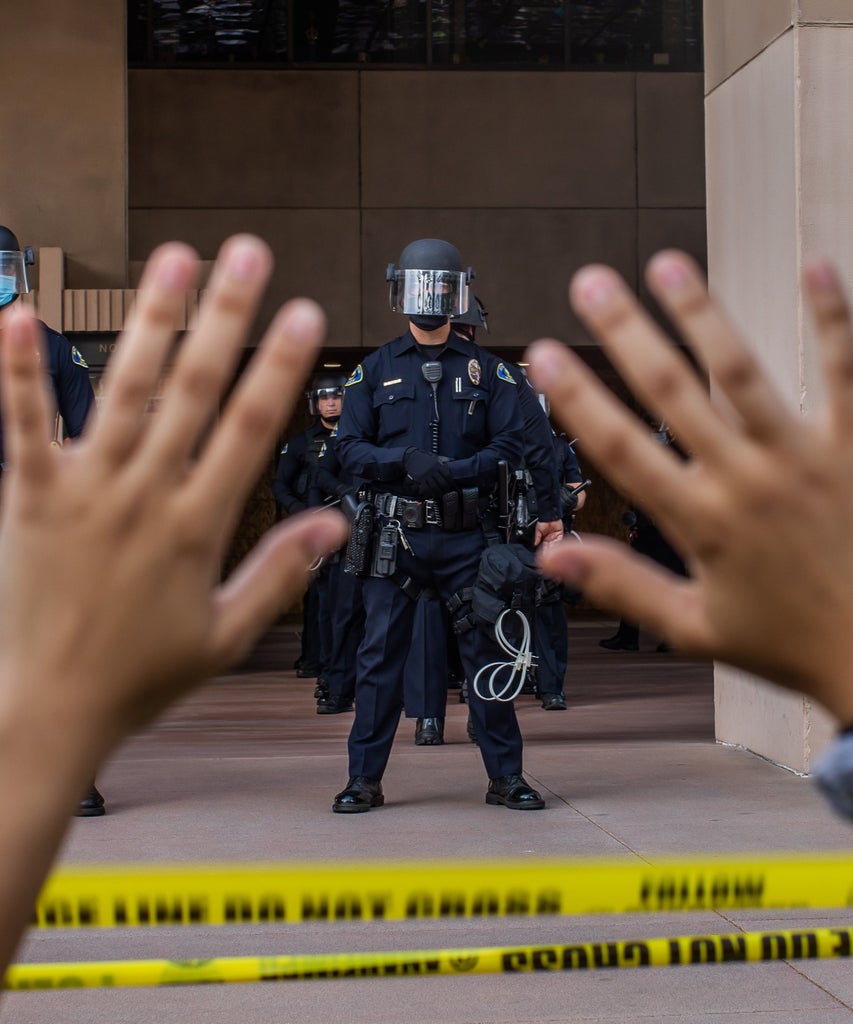
Friday is National Gun Violence Awareness day, and this year police gun violence will be in the spotlight. For the last six years, a coalition of organizations have held a national day of awareness to shed light on the growing numbers of gun homicides across the country. Everyday, nearly 100 Americans are killed by guns, and 100,000 are shot and injured every year, according to the Giffords Law Center. This year, with the ongoing protests around police brutality and racial justice spreading internationally, the national day of awareness will necessarily center on racist police shootings.
Police brutality has long been a public health crisis. Last year, U.S. police killed nearly 1,100 people, and Black people were three times as likely as white people to be targets of police violence, according to the online database, Mapping Police Violence. What’s more, 99 percent of police killings over the last six years have not resulted in criminal charges, making the injustice even more violent. Police have acted with impunity for far too long.
Since the inception of the gun violence prevention movement, national narratives around gun violence prevention have most often focused on mass shootings and students who bring guns to schools. In the span of 46 weeks, there were 45 school shootings in 2019. That’s nearly one shooting each week. And during the 2018 school year, kids brought guns to school at least 392 times, though the official number is likely much, much higher.
Still, what has been overlooked in that framing is the violence faced by Black communities and communities of color that have been harshly policed and victimized by law enforcement.
The 2018 shooting at Marjory Stoneman Douglas High School in Parkland, Florida, where 17 people were killed, marked a turning point for the gun violence prevention movement. Students around the country mobilized around school safety, while reactionaries pushed for more protection in schools, some suggesting armed police in schools was the answer. But as we’ve seen time and time again, an officer with a gun makes everyone less safe, especially Black and brown people.
Even within the gun safety movement, Black and brown youth have said they felt marginalized by not seeing their experiences with gun violence centered, despite the fact that other movements, like Black Lives Matter have addressed gun violence since 2012. “The United States has a history of disenfranchising Black and brown bodies, and in order to break that trend, they need to give Black and brown youth the resources they have yet to see,” Destiny DeShields, an organizer with the student organizing group Good Kids Mad City told Shadowproof. “When it comes to violence in inner cities, they turn to violence interventions where we see a larger police presence.”
It’s impossible to overlook police violence against Black communities, especially while thousands of people mobilize across all 50 states to draw attention to the very real public health crisis of our increasingly militarized law enforcement. According to the Police Use of Force Project, police departments that have adopted policies that require officers to use all other means before shooting, and for all use of force to be reported, among other reforms, also kill significantly fewer people. Even so, reforms have not proven enough, and as such, the movement around gun violence prevention must make strides to center police violence and Black voices and experiences.
“We cannot talk about ending gun violence without also talking about police brutality,” said Moms Demand Action organizer Lisa Hendricks on Twitter. Likewise, the student-led demonstration March for Our Lives that was organized in response to the Parkland shooting echoed the same sentiment, writing, “Police violence is gun violence.”
Over the course of the last two weeks of civil unrest, organizers have made demands to defund the police and instead fund their communities. The same marginalized communities in Chicago, Los Angeles, New York, Baltimore, Atlanta, and everywhere in between that have been met with police brutality have also seen school and mental health clinic closures. As a result, communities are demanding more resources and less police, because, as Durham Mayor Pro Tempore Jillian Johnson said in a 2019 decision against funding the hiring of new police officers, “The safest communities don’t have the most cops; they have the most resources.”
Click HERE to read more.
You can publish this article on your website as long as you provide a link back to this page.

Be the first to comment